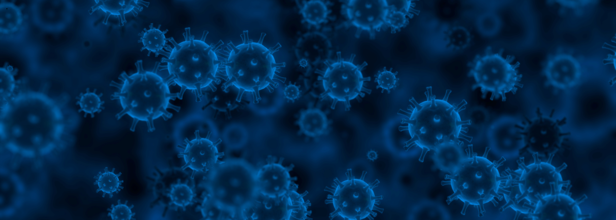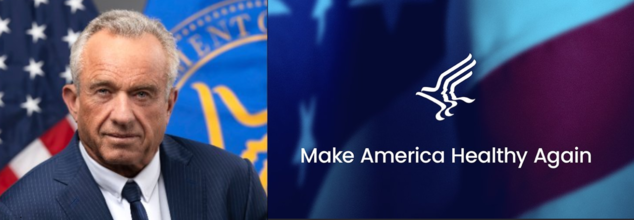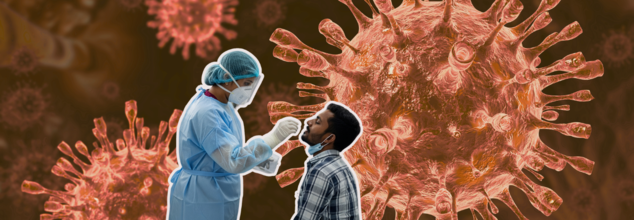- Health Conditions A-Z
- Health & Wellness
- Nutrition
- Fitness
- Health News
- Ayurveda
- Videos
- Medicine A-Z
- Parenting
- Web Stories
First Case Of New Mpox Strain In US, Confirms New York Health Department

Credits: Canva
The New York State Department of Health confirmed the first case of the new mpox strain on Tuesday. This has added to global concerns over the spread of the less known viruses and their variants.
The Centers for Disease Control and Prevention (CDC) also confirmed a total of three cases, one in California, in Georgia and the last on in New Hampshire. All these were caused by strain clade Ib. The CDC also said that these three cases were not linked.
What is the Clade IB variant?
As per the World Health Organization (WHO) the global outbreak of clade IIb began in 2022, leading to WHO declaring the outbreak as a global public health emergency for the second time in two years. At the same time there have been rising outbreaks of clades Ia and Ib affecting the Democratic Republic of the Congo and other African countries. Clade Ib has also been detected beyond Africa, including in England and now in the US.
It is an offshoot of clade I, which has been spreading person to person.
As per the CDC, Clade I has two subclades: clade Ia and clade Ib. The former is more prevalent in Central Africa, where people may have gotten clade Ia mpox through contact with infected dead or live wild animals, household transmission, or patient care. A high proportion of these cases have been reported in children who are younger than 15 years of age.
Whereas the latter strain is identified in eastern DRC. It has spread through intimate and adult sexual contact between different demographics. It has also spread across heterosexual individuals and sex trade workers, however, it has a lower case-fatality rate than those with clade Ia mpox.
ALSO READ: UK Reports New Case Of Mpox Variant Clade Ib- Is The Risk To UK Growing?
What Is Mpox?
Mpox is a viral infection similar to smallpox. Symptoms include fever, headaches, muscle pain, and a rash that turns into scabs before healing. It spreads through direct contact with the rash, or body fluids. For those with chronic conditions like diabetes, mpox can be especially serious.
What are the symptoms?
After an incubation period of 5 to 21 days of getting infected, the symptoms start with fever, headache, muscle aches, and fatigue. A key feature is swollen lymph nodes, which appear before the rash. The rash typically begins on the face and spreads to the rest of the body, including the hands and feet. The lesions go through stages—from flat spots (macules) to raised bumps (papules), fluid-filled blisters (vesicles), pus-filled spots (pustules), and finally scabs, which eventually fall off.
Though the disease usually lasts 2 to 4 weeks and resolves on its own, severe cases can occur, particularly in children, pregnant women, and those with weakened immune systems. Complications may include secondary infections, breathing problems, and, in rare cases, death.
What are the ways to prevent it?
Vaccination: Smallpox vaccines can protect against mpox, but availability may be limited. However, vaccines are in the making. The WHO has also asked vaccine manufacturers to fast-track the process of submission and approval of the vaccine.
Hygiene: Regular handwashing, avoiding contact with infected materials, and keeping distance from those infected can help reduce transmission.
Routine Monitoring: Regular check-ups for managing diabetes and other conditions are essential to catch any complications from mpox early. In case you notice the signs, get a check up done. RT-PCR kits are also readily available to detect mpox.
Kennedy Names New Vaccine Advisers Among Whom Are Anti-Vaxxers And Those Who Spread Misinformation

Credits: X
The U.S. Health Secretary Robert F. Kennedy Jr. on Wednesday unveiled eight new members to the Advisory Committee on Immunization Practices (ACIP), days after abruptly dismissing the previous 17-member panel. Health and Me had previously reported on the JFK Jr.'s decision to 'retire' the existing members of the ACIP.
This move has stirred concern among doctors, scientists, and public health groups, who fear Kennedy is steering federal vaccine policy in a direction driven more by ideology than science.
The new appointments include individuals known for their skepticism about mainstream vaccine science, including critics of COVID-19 vaccines and public health measures implemented during the pandemic.
A Shift in Tone and Credentials
Among the new advisers is Dr. Robert Malone, a scientist who once worked on mRNA vaccine technology and later gained notoriety for promoting conspiracy theories about COVID-19 vaccines. Malone has suggested that Americans were “hypnotized” into taking vaccines and claimed the shots cause a form of AIDS—both statements widely debunked by scientific communities.
Also joining the panel is Dr. Martin Kulldorff, a co-author of the controversial Great Barrington Declaration that argued against pandemic lockdowns, and Dr. Cody Meissner, a pediatric infectious disease expert who previously served on both ACIP and the FDA’s vaccine advisory panel.
Vicky Pebsworth, a regional director for the National Association of Catholic Nurses and former board member of the National Vaccine Information Center—often cited for spreading vaccine misinformation—was also appointed.
Concerns About Qualifications and Bias
Public health experts expressed alarm over the new composition. “The previous ACIP was made up of technical experts who have spent their lives studying vaccines,” said Abram Wagner, a University of Michigan public health researcher. “Most people on the current list don’t have the technical capacity we expect from those making complex, science-driven decisions.”
Wagner added that the inclusion of Pebsworth was “incredibly problematic,” due to her association with groups accused of spreading vaccine misinformation.
Despite public concerns, Kennedy stated the committee would not be composed of “anti-vaxxers” but of “credentialed scientists.”
ALSO READ: RFK Jr. Removes Entire CDC Vaccine Advisory Committee
A Closer Look at the Appointees
Other appointees include:
- Dr. James Hibbeln, a former NIH neuroscientist focused on nutrition and brain health.
- Retsef Levi, an MIT operations management professor who called for an end to the COVID-19 vaccine program in a 2023 video.
- Dr. James Pagano, an emergency medicine physician from Los Angeles.
- Dr. Michael Ross, a Virginia-based obstetrician and gynecologist.
- Dr. Meissner, arguably the most experienced in vaccine policy among the new members, served on ACIP and the FDA’s vaccine advisory committee. During his term, he notably voted against broad booster recommendations in 2021—a decision later overturned by the FDA.
Changing Course on Public Health Policy
The ACIP, created in 1964, advises the CDC on how to use FDA-approved vaccines. While Kennedy promised during his Senate confirmation to uphold the vaccination schedule, he has since overridden ACIP’s guidance. In May, he independently altered COVID-19 vaccine recommendations for children and pregnant women.
On Monday, he dismissed all 17 existing ACIP members, pledging to install a new team before the committee’s next meeting in late June. The upcoming agenda includes key decisions on vaccinations for flu, COVID-19, HPV, RSV, and meningococcal disease.
Kennedy, long a polarizing figure in the vaccine debate, has accused the former panel of being too aligned with pharmaceutical companies. Critics warn that his restructured committee may prioritize politics over public health science.
Meet The 14-Year-Old Genius Behind An AI That Can Detect Heart Disease Within 7 Seconds

At just 14 years old, Siddharth Nandyala is already changing the face of modern medicine. A native of Anantapur in Andhra Pradesh in India, living in Frisco, Texas, this young genius is causing global waves with the development of CircadiaV, a revolutionary AI-powered mobile app that can diagnose heart disease within a record seven seconds. With nothing more than a smartphone and sophisticated machine learning, Siddharth's invention has the potential to transform cardiovascular disease screening—one of the globe's top causes of death.
With certification from international tech giants such as Oracle and ARM, Siddharth is officially the world's youngest AI-certified professional but behind the titles and accolades, it's his vision for affordable, early healthcare interventions that really sets him apart. While most teenagers are at the age playing around with social media and video games, Siddharth is addressing medical challenges on a global scale.
Heart disease remains the primary cause of death in the world, resulting in more than 17.9 million deaths annually, as reported by the World Health Organization (WHO). A significant portion of those deaths are avoidable if diagnosed early enough. Unfortunately, the absence of medical diagnostic infrastructure in remote and underprivileged regions—particularly in developing nations—is an enormous challenge.
How CircadiaV Works?
What sets CircadiaV apart is its non-invasive, fast, and precise method for early detection of heart disease. The app can capture heart sounds by holding a smartphone against a patient's chest. It removes ambient noise, analyzes the audio data through a cloud-based machine learning model, and provides results in seven seconds.
The program can identify various cardiac anomalies, such as:
- Arrhythmias (irregular heartbeats)
- Early indications of heart failure
- Indicators of coronary artery disease
- Abnormalities in the heart valves
And it's amazingly precise—with a detection accuracy of more than 96%, as confirmed through testing on over 15,000 patients in America and another 700 in India, including at the Guntur Government General Hospital (GGH).
This application does not substitute for the EKG but is used as a quick, scalable pre-screen," Siddharth said to the Smithsonian Magazine. That clarification is important—it is not intended for consumer use at home or consumer diagnostics, but is designed to assist medical personnel, especially in impoverished environments where full cardiac diagnostics might not be within reach.
That is where CircadiaV comes in. Its low-cost, cloud-based, and portable nature makes it a perfect device for community clinics and frontline health workers. The application can be utilized in rural areas to give an early diagnosis, leading to early referrals and possibly cutting long-term morbidity and mortality.
An initial potential diagnosis in patients otherwise unlikely to have had access to medical treatment may in the end save long-term morbidity and mortality from this disease.
That is, this app could literally be a lifesaver—particularly for patients in rural towns, refugee camps, or even wartime zones where cardiologists and expensive diagnostic technology are scarce.
More Than Just a One-Time Invention
Siddharth's foray into innovation had not begun with CircadiaV. Prior to this, he had created a low-cost prosthetic arm, a innovation to enhance mobility for individuals with limb loss in underprivileged communities. He also had started STEM IT, a company that creates science and technology kits for children, enabling experiential STEM learning across socioeconomic barriers.
His success has already seen him receive national and international acclaim, including a Certificate of Recognition from the US House of Representatives and a congratulatory letter from President Joe Biden.
And although he is as old as some of his classmates are young, Siddharth has just become a computer science major at the University of Texas. And his goals don't end there. He hopes to make CircadiaV capable of not just detecting lung diseases like pneumonia and pulmonary embolism, but also of analyzing recordings of lung sounds just like the app presently analyzes heart sound recordings.
Clinically, prompt detection is the key to success with cardiovascular treatment. Most terminal cardiac illnesses—such as congestive heart failure or severe coronary artery disease—are salvageable if detected early. But when symptoms intensify, choices narrow, and survival rates plummet.
By providing healthcare professionals with an advantage with CircadiaV, Siddharth is delivering:
- Earlier detection = quicker decision-making on treatment
- Non-invasive screening guarantees greater uptake in community-based screening
- Cloud-fueled insights enable real-time collaboration among rural clinics and urban hospitals
Consider the following: a community health worker in a remote village in India uses a smartphone to identify early-stage heart failure in a 55-year-old man. Rather than waiting weeks for a cardiology visit, that patient can be expedited for further testing and treatment—saving his life.
The app is particularly useful for terminal heart patients whose survival chances raise significantly if the condition is detected at the asymptomatic or initial phases. With correct warnings regarding the development of arrhythmias or valve malfunctions, the technology enables physicians to act before it is too late.
India's COVID Tally Soars To Nearly 7000 Active Cases With 3 Deaths In 24 Hours; Is A New Wave Here?

India's Covid-19 trajectory has taken a sharp upward turn since the end of May, sparking fears of a potential new wave of infections. The active Covid-19 cases rose to 6,815 as of June 11—considerably higher than only 257 cases on May 22—according to the Union Ministry of Health dashboard.
Over the last 24 hours alone, the nation logged 324 fresh cases, accompanied by 783 recoveries and three new virus-linked deaths. This increase, while not yet a major outbreak by any means, indicates a change that will be monitored—specifically because states such as Kerala, Gujarat, and Karnataka are registering a steady rise.
Public health agencies have cautioned that although the severity of infections as a whole is still under control because of high inoculation levels and hybrid immunity, susceptible groups, particularly the elderly and those who suffer from co-morbidities, are still under substantial risk of developing complications or dying.
Three further Covid-related deaths were reported on June 10, taking India's death toll in 2025 to 68. These comprised:
A 90-year-old female in Delhi with co-morbidities such as Congestive Heart Failure (CCF), Chronic Kidney Disease (CKD), and respiratory acidosis.
A 79-year-old male in Kerala, who was controlling Type 2 diabetes and other chronic diseases.
A 44-year-old male in Jharkhand, who had severe multiple conditions such as aspirational pneumonia, acute respiratory distress syndrome (ARDS), septic shock, hypertension, and hypothyroidism.
These examples highlight a stern reality: even with advances in medical interventions, Covid-19 is risky—particularly for individuals with compromised immune systems or existing health issues.
Kerala has the highest active caseload currently, with 2,053 active infections and 96 fresh cases in the past 24 hours. Even with its strong healthcare setup and high awareness rate, the state continues to fight against the virus due to its ageing population and lifestyle disease prevalence.
Gujarat is next, with 1,109 active cases, with Surat alone having 166. Karnataka, which logged 136 new cases in 24 hours, is another hotbed, reporting two deaths in the past 24 hours.
Incidentally, Delhi, having reported one death, registered a drop in active cases—691 now. Experts attribute this to timely public health interventions and increasing immunity in cities.
Why Are Hospital Admissions Being Led by High-Risk Patients?
Although the majority of new infections have been asymptomatic or mild, hospitalizations are disproportionately accounted for by high-risk groups, such as the elderly and those with underlying health conditions.
Recent fatalities in Delhi and Jharkhand included patients who were either old or had concurrent chronic diseases. According to medical professionals, these patients have lesser ability to develop an adequate immune response, and therefore they are prone to develop complications such as sepsis, respiratory failure, or multi-organ dysfunction if they contract Covid-19.
To an international audience, India's current Covid-19 data are not mere figures—what they show is a dynamic, living picture of how the pandemic is being addressed in one of the world's most populated countries.
The rebound is a warning for other nations that have reduced Covid-19 monitoring. The combination of declining immunity, viral evolution, and underreporting may easily spur new waves in other parts of the world, particularly as travel expands and public complacency deepens.
India's widespread Covid-19 surveillance system presents early notice of the potential for new variants and geographic trends. A spike here may, in the past, herald a ripple effect worldwide—as was the case with previous waves.
Why Are Individuals with Co-Morbidities Experiencing the Worst Outcomes?
The link between co-morbidities and worse Covid-19 outcomes has been clear from the beginning of the pandemic. Diseases such as diabetes, heart disease, kidney issues, obesity, and weakened immune systems severely limit the body's capacity to resist infection. Here's why:
Impaired Immune Function: Chronic diseases weaken the immune system's capability to detect and fight new infections efficiently.
Elevated Inflammatory Biomarkers: Underlying diseases tend to raise baseline levels of inflammation within the body, which in the event of a Covid-19 infection can spiral out of control into cytokine storms and serious systemic complications.
Delayed Hospitalization or Diagnosis: Most at-risk patients avoid care because of overlapping symptoms or ignorance, resulting in late disease at presentation.
Drug Interactions and Treatment Limits: Many patients with chronic diseases are already on medication regimens that can complicate Covid treatment, limiting options for antiviral therapies or supportive interventions.
The elderly and those with multiple diseases often experience rapid progression from mild symptoms to severe respiratory distress or organ failure. Vigilant monitoring and early intervention are critical in such cases.
Is a New COVID-19 Wave Here?
While India is witnessing a sharp rise in Covid-19 cases—jumping from just 257 active cases on May 22 to nearly 7,000 by June 11—experts are cautious about declaring it a full-blown new wave. The current surge appears localized, with states like Kerala, Gujarat, and Karnataka leading the spike. Most cases remain mild, and hospitalizations are limited to high-risk individuals with co-morbidities. Health officials are tracking for emerging variants closely but have not yet spotted any concerning mutations. Although it is not a new wave, the trend points to calls for increased vigilance, in particular for the elderly and the immunocompromised.
Indian health officials are calling for continued wearing of masks in risk areas, booster doses of vaccination, and early reporting of symptoms—particularly among vulnerable groups.
A few state health departments are stepping up genome sequencing and contact tracing in order to eliminate the possibility of any new sub-variants that could be fuelling this upsurge. There is no official confirmation on a new variant yet, but researchers are keeping a lookout.
The Union Health Ministry is also urging enhanced hospital readiness, reconsidering oxygen and ventilator inventories, and releasing advisories to local governments to stay vigilant.
© 2024 Bennett, Coleman & Company Limited

